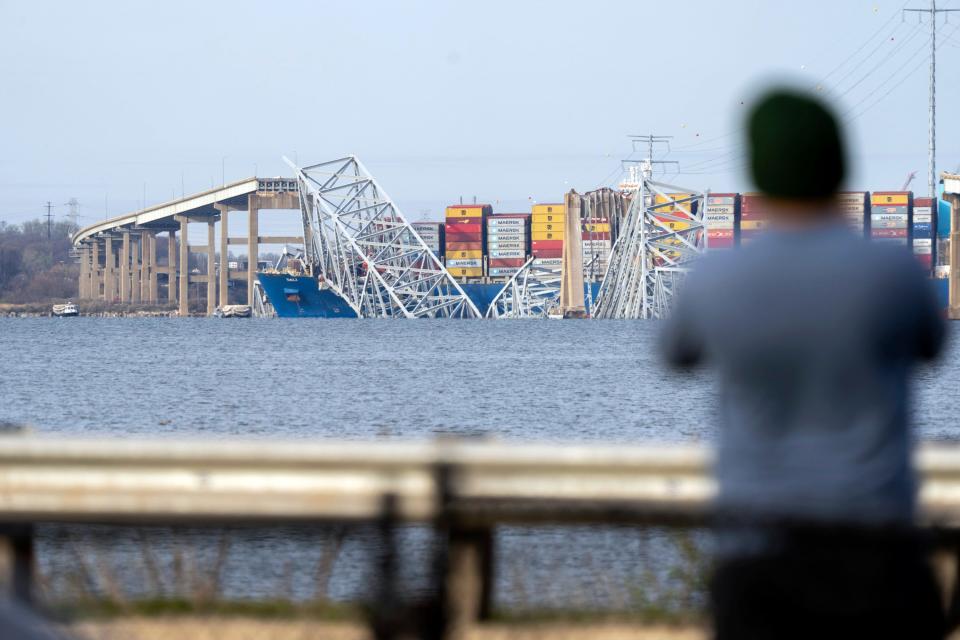'Nothing is staying put in the ocean': Bridge collapse rescue teams face big challenges
The challenges rescue teams are facing in a frantic search for survivors of a catastrophic bridge collapse in Baltimore on Tuesday are daunting, experts said.
Jim Bellingham, executive director for the Johns Hopkins Institute for Assured Autonomy. told USA TODAY the Francis Scott Key Bridge disaster made for “a tragic day for Baltimore.”
“Nothing is staying put in the ocean,” said Bellingham, a marine robotics expert who also lives in nearby Fells Point. “Everything is moving” in the Patapsco River, a tidal estuary, which presents just one difficulty for rescue efforts. Rescuers would have to determine the speed and direction of the current to figure out where to search ? toward Baltimore Harbor or out toward the Chesapeake Bay, he said.
The massive search effort was launched after a large cargo vessel struck the bridge, collapsing the structure into the Patapsco River and shutting down a key artery for East Coast shipping. There were reports of vehicles plunging into the river, and authorities say teams are looking for six construction workers who were on the bridge at the time.
Live updates: Baltimore's Key Bridge collapses after ship hits the span

Bellingham said it’s likely any workers who may have been on the bridge would have been wearing reflective vests and even flotation devices that would improve visibility in the dark river. They might also have flares and are more easily spotted by rescue helicopters.
Drivers who might be trapped in cars or those who could be trapped in the bridge’s wreckage are in greater danger, Bellingham said.
“That’s a very different search problem,” he said. “You have to go underwater and visibility in coastal waters is typically very poor.”
Rescuers are using sonar, lights, cameras and robotic machinery as well as human divers, but Bellingham said divers would face their own risks because the wreckage might not be stable.
The longer the search goes on, the less likely rescuers are to find survivors, given the temperature of the water, and the likelihood of people being trapped with little to no air.
But Baltimore, with many Navy and Coast Guard facilities and military contractors nearby, might be as well prepared to deal with the disaster as any place.
“Their job is to rescue people,” Bellingham said. “They want to believe they can do that, and there’s a tendency not to want to give up.”
This article originally appeared on USA TODAY: Baltimore bridge rescue teams face challenges: 'Everything is moving'
